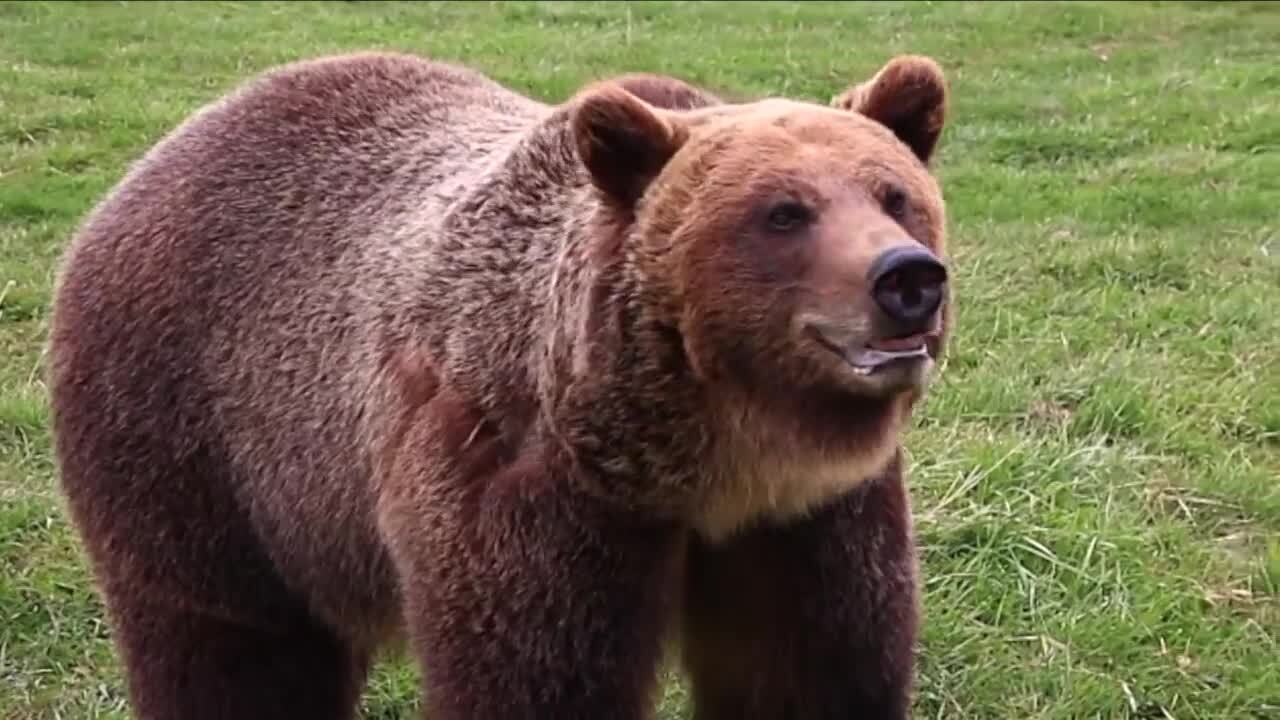MISSOULA — MTN News recently told you about the history of grizzly bears. Now, we take a look at the current ecology of grizzlies in Montana -- and offer up some bear safety tips.
Montana is home to this massive mammal - reaching heights up to eight feet tall and weighing up to 800 pounds, the grizzly bear is among the largest omnivores in North America.
Grizzlies have large populations in Glacier National Park and the greater Yellowstone ecosystem, but their territory also stretches into Idaho, Washington, and Wyoming.
During the 1880s there were approximately 50,000 grizzlies in the lower 48 states but over time, 95% of grizzly populations were lost from the U.S. range
Early declines were largely a result of persecution by European settlers; grizzly bears were shot, poisoned, and trapped wherever they were found.

For example, there were less than 200 grizzlies in and around Yellowstone National Park in the 1970s.
The Endangered Species Act became law in 1973, and grizzlies were listed as one of the first threatened species in 1975.
The following decades would provide strict conservation measures and Montana’s agencies joined with key federal land and wildlife officials to protect habitat areas.
In the six recovery areas for the bears, only four areas have proper estimates in the 2020 Grizzly Bear Recovery Annual Report.
It says there are 727 grizzlies in the Greater Yellowstone Ecosystem, an estimate of 800 in the Northern Continental Divide Ecosystem, 54 in the Yak and 53 in the Selkirk. As of 2021, there have been a few confirmed instances of grizzlies in the Bitterroot.

The animals are expanding their range as they grow in numbers -- meaning an increase in sightings and potential encounters may be likely as Montana’s population also grows. Grizzly bears are opportunistic and adaptable omnivores, and more than half their diet is vegetarian. While grizzlies like to eat mostly what is in nature, they’ll also eat human garbage if they have access to it.
Some bear food is threatened due to a warming and changing climate and food scarcity is known to increase human-bear conflict rates. The number of grizzly bear deaths has risen in recent years and grizzlies are often killed if they are a threat to people or livestock.
They’re out there and they’re numerous -- but they are just wild animals that have called this place home for thousands of years. If you’re out in the woods here’s a few do’s and don'ts to practice bear safety -- and the methods are different depending on the species of bear.
Advice from the National Park Service when in the backcountry:
Do’s
- Be sure to always carry bear spray and know how to use it
- Hike in large groups and stay on trails
- Identify yourself by talking in a calm manner so the bear knows you are there you can yell “hey bear” or a jingle bell can also alert wildlife to your presence
- When camping in bear country hang your food in a tree 100 feet from your campsite
- Keep a clean camp with no traces of food
- Avoid carcasses

Don’t's
- Don’t hike at dawn, dusk, or at night when grizzlies are most active
- Don’t leave food or trash unattended
- if you’re wearing a pack don’t drop it keep it on your back
- Be sure not to run away. This can invoke a predator’s instinct for running away prey
- Never camp in an area with obvious bear activity
- Do not feed bears or any wildlife

You can also learn how to "Be Bear Aware" from Montana Fish, Wildlife and Parks here.
Preventing a conflict is easier than dealing with one:
- Bear spray is a highly effective, non-lethal bear deterrent. Carry EPA-approved bear spray and know how to use it.
- Never feed wildlife, especially bears. Bears that become food conditioned lose their natural foraging behavior and pose a threat to human safety. And it is illegal to feed bears in Montana.
- Know your bears. It is important to know the difference between grizzly bears and black bears, whether you are hunting or hiking.
- Always keep a safe distance from wildlife. Never intentionally get close to a bear.
- A properly constructed electrified fence is both safe for people, livestock and pets, and has proven effective at deterring bears from human-related resources such as beehives, garbage or small livestock
Finally, make sure to report encounters if a bear has displayed aggressive or defensive behavior toward people, livestock or pets, or damaged property.







